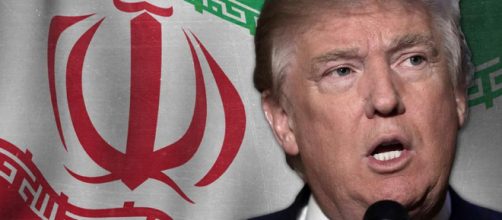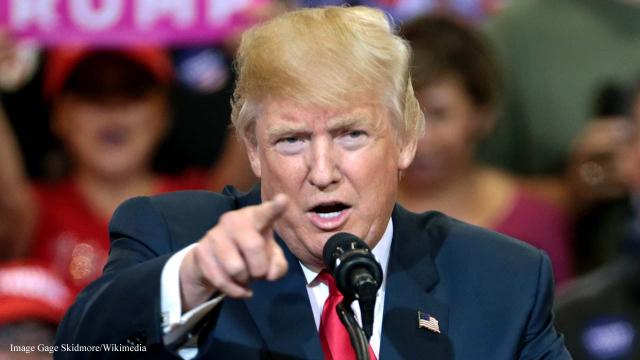ON TUESDAY and as predicted, Donald Trump did pull the US out of the JCPOA, otherwise known as the Iran nuclear deal, which was also signed by the UK, France, Germany, China, Russia and the EU in 2015. There has been much made of this decision by a variety of media outlets but none really touch on the geopolitical history of the region, including western involvement that exacerbated the situation within Tehran.
Trump claimed “It is clear to me that we cannot prevent an Iranian nuclear bomb under the decaying and rotten structure of the current agreement.” Echoing the sentiments expressed by Israeli PM Benjamin Netanyahu.
Statements from the UK
In the UK, parliament saw statements by Shadow Foreign Secretary, Emily Thornberry and Foreign Secretary, Boris Johnson. Mrs Thornberry statement called for leadership within the EU to keep the deal on track, citing that every independent report categorically states that the deal is working and points out that it provides an opportunity and a platform to discuss a deal with Iran on its ballistic missile programme, its regional activities, and its record on human rights.
However, Boris Johnson decided to (wrongly) praise Trump for the potential deal in the Korean peninsula and despite reiterating that the government fundamentally disagrees with Trump’s decision, they would potentially support an alternative solution put forward by the US administration.
Mr Johnson seemed unwilling to distance the government too far from Trump despite Theresa May stating that the UK would support the EU in their endeavour to keep the deal alive.
Iran, Israel and Saudi Arabia
The complexities of the Iran deal cannot be understated by this point and the next major war could kick off if violence erupts in the region. The first point of order is Saudi Arabia and Iran, the two nations have been vying for geopolitical control of the region since Saudi Arabia was established (with the assistance of the UK and US).
The Shia and Sunni rivalry is nothing new but it intensified after Al Saud gained a significant portion of the Arabian territory and unified them in 1926. But in 1953, declassified documents from the CIA confirmed that the US were directly involved in the overthrow of the leadership of Iran, who subsequently installed the Shah and relations did improve slightly.
However, the 1979 Iranian revolution saw the Shah overthrown and the relations between Al Saud and Iran deteriorated drastically. Proxy wars then developed through Bahrain, Syria and Yemen, the latter is described as the worst humanitarian crisis at the moment. Then the next player in the game of a geopolitical struggle is Israel; the PM Netanyahu has been the receiver and giver of praise with Donald Trump’s administration and it is widely recognised that his ‘Iran Lied’ presentation on Holocaust Memorial Day was designed with Trump in mind.
Israel’s relationship with Iran is one that has been indifferent and I have written about this before briefly. Prior the 1979 revolution, they were united through fears of Nasserite pan-Arabism and Soviet influence in the middle east and the Shah kept them at arm’s length, however, it was beyond 1979 that things became volatile.
Despite cooperation well into the 90s, Iran and Israel soon began to drift further apart, with proxy wars developing in Syria. The deal made in 2015 was to lift majority of the sanctions imposed by the US President Bill Clinton in 1995.
US Middle East policy
Iran have long been a key player in the Middle East and are big reason why the wests divide and conquer tactics have been failing since the western adventure into the region after the divide of the Ottoman Empire. The US Middle East policy has largely remained the same for decades within the region and this mess cannot be squarely place at Trump’s feet but his latest move has potentially put the timer on for volcano day. The president’s national security advisor, John Bolton, has been longing for regime change in Iran, he has stated that the US would support certain groups and spoke at a rally for the dissident group MEK in Tehran.
This is nothing new though, US foreign policy has been largely centred on certain countries in the region. When George Bush declared Iran as one of the Axis of Evil in 2003, this reignited that foreign policy that had been simmering under the surface after Bill Clinton’s harsh sanctions imposed on the region. Like previously mentioned, the US were directly involved in the government overthrow in 1953 and they supported Saddam Hussein in the 1980 Iraq-Iran war – who later became part of the Axis of Evil according to the US – and recently a US judge decided that Iran must pay $6 million to 9/11 victims despite the official report stating that the terrorists had nothing to do with them.
Israel’s Netanyahu has been calling on the US to do something about Iran and they have been actively perpetuating the lie that they are developing nuclear weapons despite everyone agreeing that this is untrue.
However, there is also one aspect that has been left off of most reports. On April 11th, Iranian officials announced that they would switch from the US dollar to Euro as its official reporting foreign currency. The next move by the US will be watched closely but as Emily Thornberry pointed out in her speech, the EU and the UK cannot look towards the US for global leadership anymore.



